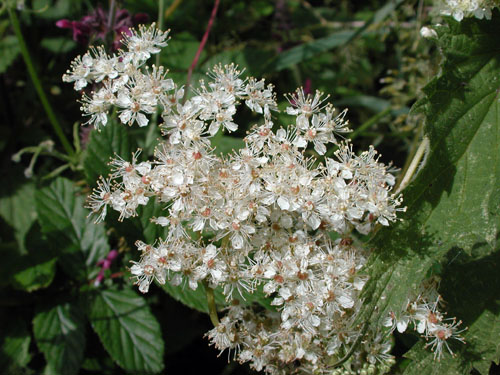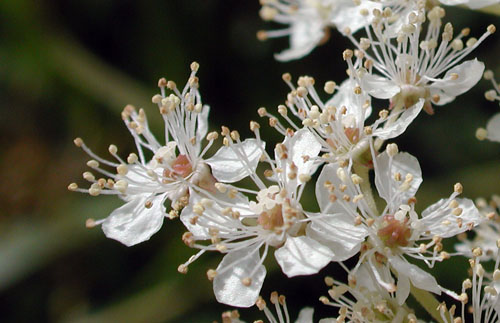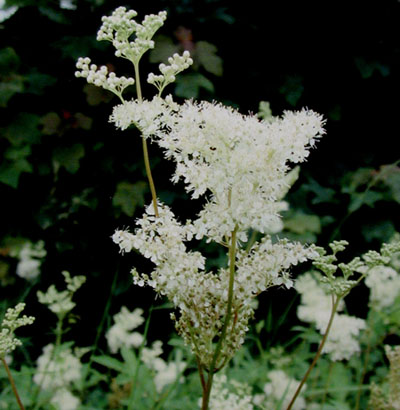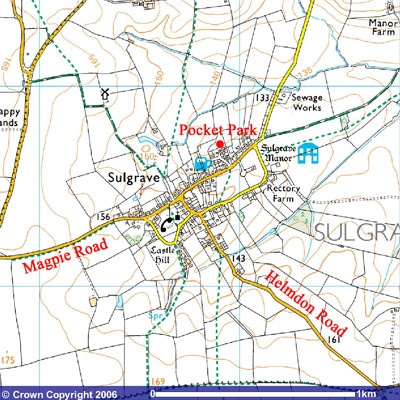
....creamy-white frothy flowers of meadowsweet
FLOWER OF THE MONTH - JULY 2007
(Home)
MEADOWSWEET (Filipendula ulmaria)

....creamy-white frothy flowers of meadowsweet

....a closer look at the flowers

Meadowsweet in Helmdon Road
The creamy-white frothy flowers of meadowsweet are a sign of high summer. It is a plant of damp grassy places, ditches, verges, woodland or watersides. The flowers have quite a heady scent, and with the sharper-scented leaves have long been used as a strewing herb, for example at church weddings, hence one of its many alternative popular names, bridewort. The 16th-century herbalist John Gerard held it in high regard because it “delighteth the senses: neither doth it cause head-ache, or loathesomesness to meat, as some other sweet-smelling herbs do”. The dried leaves were, and still are, used to flavour drinks such as port, ale and mead, which probably is the origin of the name meadowsweet (meadsweet) rather than any connection to meadow. Other uses are to flavour soup, as a herbal tea, to scent linen, and even to produce a meadowsweet beer. For more mysterious reasons, the plant once rivalled mistletoe as sacred to the Druids.
Other local names include sweet hay, queen-of-the-meadow, and courtship and matrimony, which refers to the difference in scent before and after crushing the plant.
There’s one other important fact. It was the first discovered source of salicylic acid, in 1838, from which aspirin was later synthesised. The acid is also extracted from willow bark, but it is from meadowsweet’s former scientific name, Spiraea Ulmaria, that the name aspirin is derived.
Meadowsweet may be seen in the Pocket Park and along Helmdon Road.

Image produced from the Ordnance Survey Get-a-map service.
Image reproduced by kind permission of Ordnance Survey
and Ordnance Survey of Northern Ireland.
Text by George Metcalfe. Photographs by Colin Wootton and George Metcalfe.